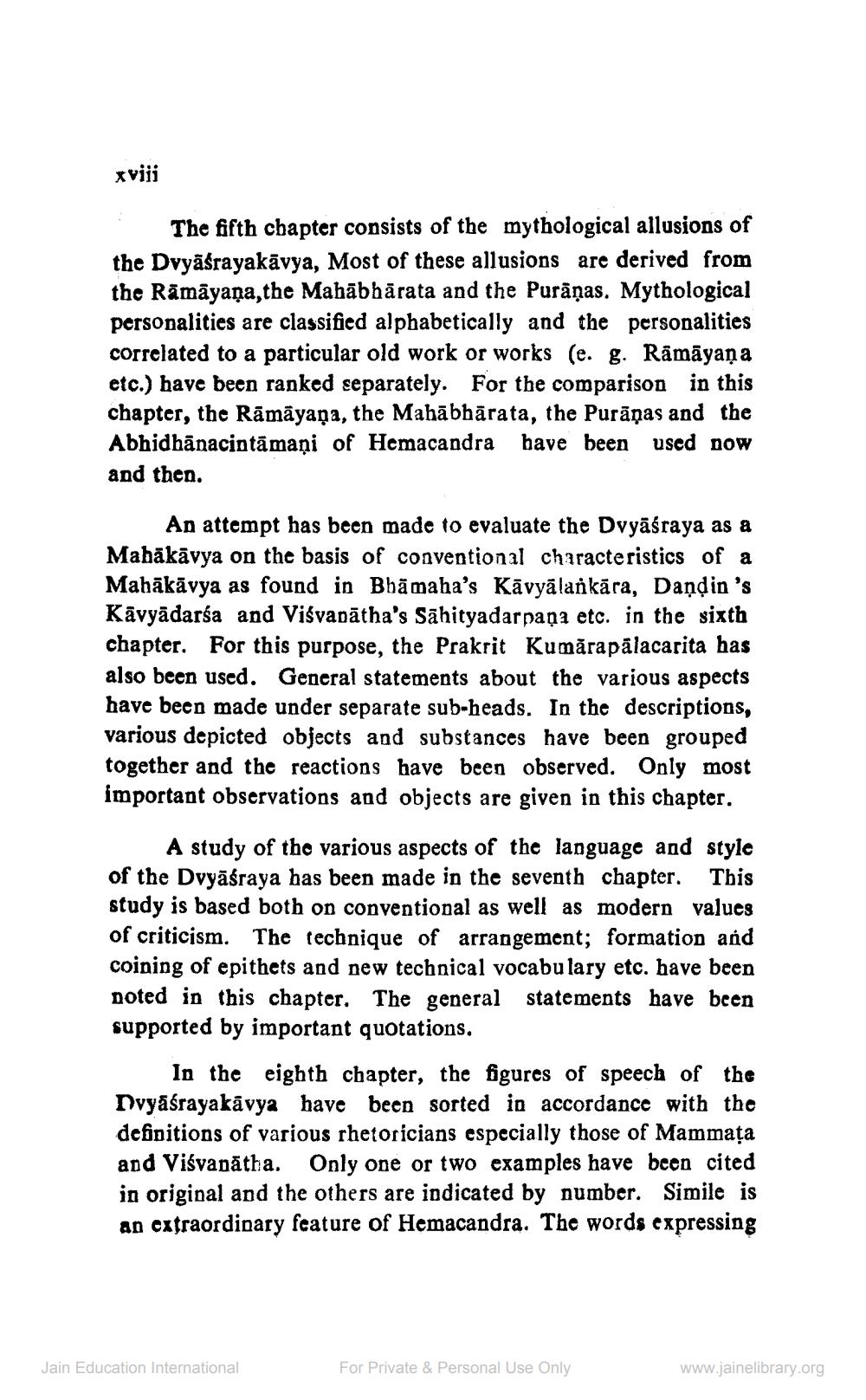________________
xviii
The fifth chapter consists of the mythological allusions of the Dvyāšrayakāvya, Most of these allusions are derived from the Rāmāyaṇa, the Mahābhārata and the Purāņas. Mythological personalities are classified alphabetically and the personalities correlated to a particular old work or works (e. g. Rāmāyaṇa etc.) have been ranked separately. For the comparison in this chapter, the Rāmāyaṇa, the Mahābhārata, the Purāņas and the Abhidhānacintāmaņi of Hemacandra have been used now and then.
An attempt has been made to evaluate the Dvyāśraya as a Mahākāvya on the basis of conventional characteristics of a Mahākävya as found in Bhāmaha's Kāvyālaňkāra, Dandin 's Kävyādarśa and Viśvanātha's Sāhityadarpaşa etc. in the sixth chapter. For this purpose, the Prakrit Kumărapālacarita has also been used. General statements about the various aspects have been made under separate sub-heads. In the descriptions, various depicted objects and substances have been grouped together and the reactions have been observed. Only most important observations and objects are given in this chapter.
A study of the various aspects of the language and style of the Dvyāśraya has been made in the seventh chapter. This study is based both on conventional as well as modern values of criticism. The technique of arrangement; formation and coining of epithets and new technical vocabulary etc. have been noted in this chapter. The general statements have been supported by important quotations.
In the eighth chapter, the figures of speech of the Dvyāśrayakāvya have been sorted in accordance with the definitions of various rhetoricians especially those of Mammața and Viśvapātha. Only one or two examples have been cited in original and the others are indicated by number. Simile is an extraordinary feature of Hemacandra. The words expressing
Jain Education International
For Private & Personal Use Only
www.jainelibrary.org




